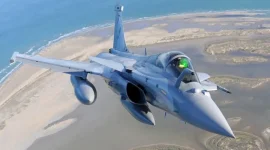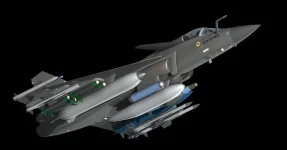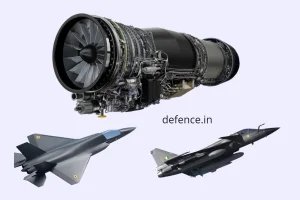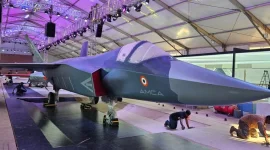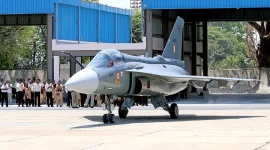- Views: 93
- Replies: 1
In a significant shift impacting India's military self-reliance goals, Hindustan Aeronautics Limited (HAL) has decided to equip its entire run of 73 Tejas Mk1A fighter jets with Israeli-made radar and electronic warfare (EW) systems.
This move reverses a prior commitment to integrate locally developed systems from the 41st aircraft onwards, citing delays in the certification process for the indigenous technology.
The decision affects the integration of the Uttam Active Electronically Scanned Array (AESA) radar and the Swayam Raksha Kavach (SRK) electronic defence suite, both developed by the DRDO.
This development has ignited a debate on the balance between bolstering the Indian Air Force's (IAF) operational readiness and pursuing the national 'Atmanirbhar Bharat' (self-reliant India) initiative in the critical defence sector.
The Tejas Mk1A is an advanced version of the indigenously designed Light Combat Aircraft (LCA), featuring upgraded avionics and weapon systems. It is poised to become a cornerstone of the IAF's fleet, replacing the aging MiG-21 squadrons.
The plan had been to showcase India's growing technological prowess by fitting a significant portion of the new fleet with the homegrown Uttam radar and SRK defence suite, marking a milestone in sovereign defence capability.
However, HAL has now issued a Letter of Intent to the Israeli defence firm ELTA Systems. The agreement is for the supply of the combat-proven ELM-2052 AESA radar and the Scorpius-SP electronic warfare pod for all 73 jets in the initial order.
While the ELM-2052 radars will be assembled in India by HAL through a technology transfer arrangement, the decision to rely on foreign systems for the entire batch underscores the challenges facing the domestic defence ecosystem.
The core issue, according to HAL, lies in the prolonged certification timeline for the DRDO-developed systems. Officials have pointed to difficulties in meeting the stringent reliability and integration standards required by the IAF for combat aircraft.
These delays have created a conflict with the urgent operational need to induct the new fighters into service.
This explanation has been contested by sources within the DRDO, who argue that the Uttam radar had received clearance for production in 2023. They state that the system has successfully completed multiple phases of flight trials and that HAL had been advised to begin subsystem production.
DRDO officials have reportedly requested more time, expressing confidence that the indigenous EW suite would be fully certified before production reached the later batch of aircraft.
The Uttam AESA radar is designed to provide superior target detection and multi-tracking capabilities, while the SRK suite aims to offer advanced protection against missile threats.
The delay in their operational deployment on the Tejas platform highlights a critical gap between development and practical integration, a challenge that India's defence manufacturing sector continues to navigate as it strives for true self-reliance.
The timely delivery of the Tejas Mk1A has also been impacted by separate delays in the supply of F404 jet engines from GE Aerospace in the United States, further complicating the production schedule.

